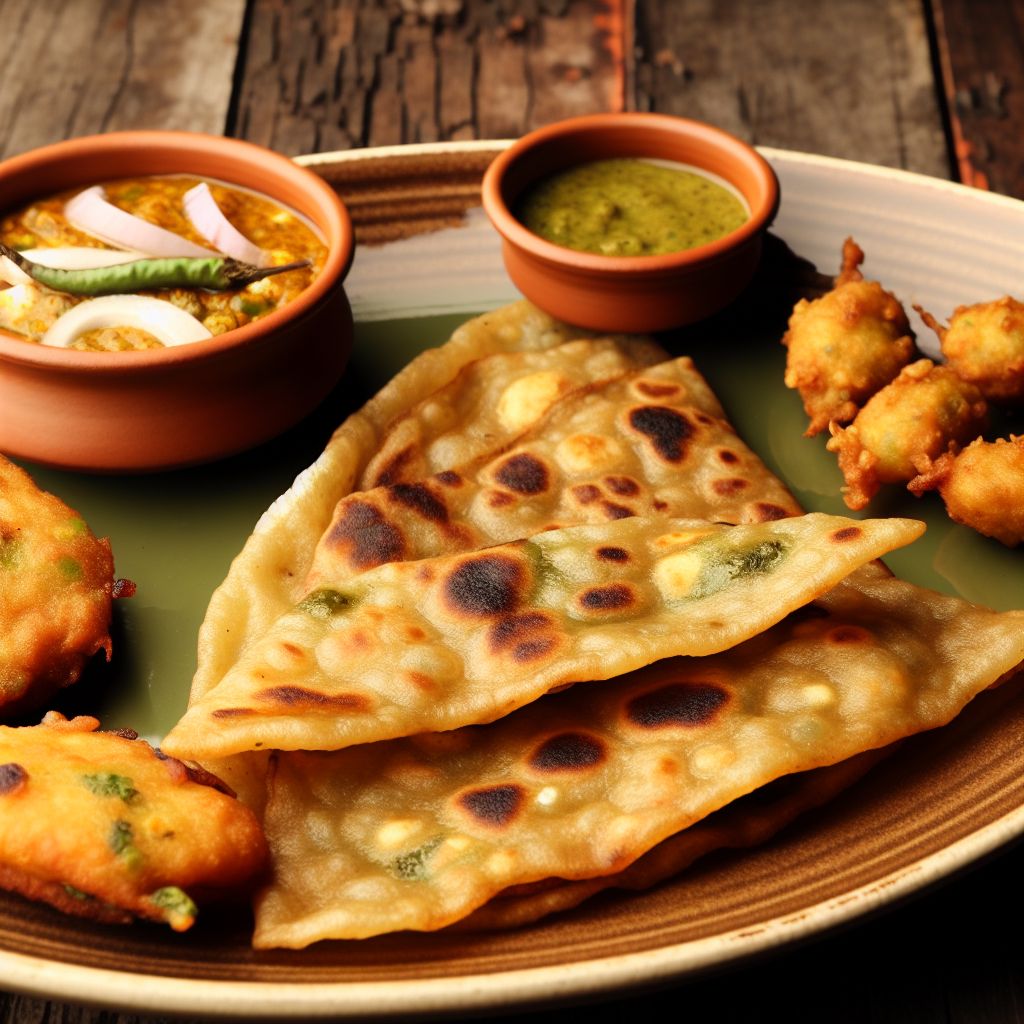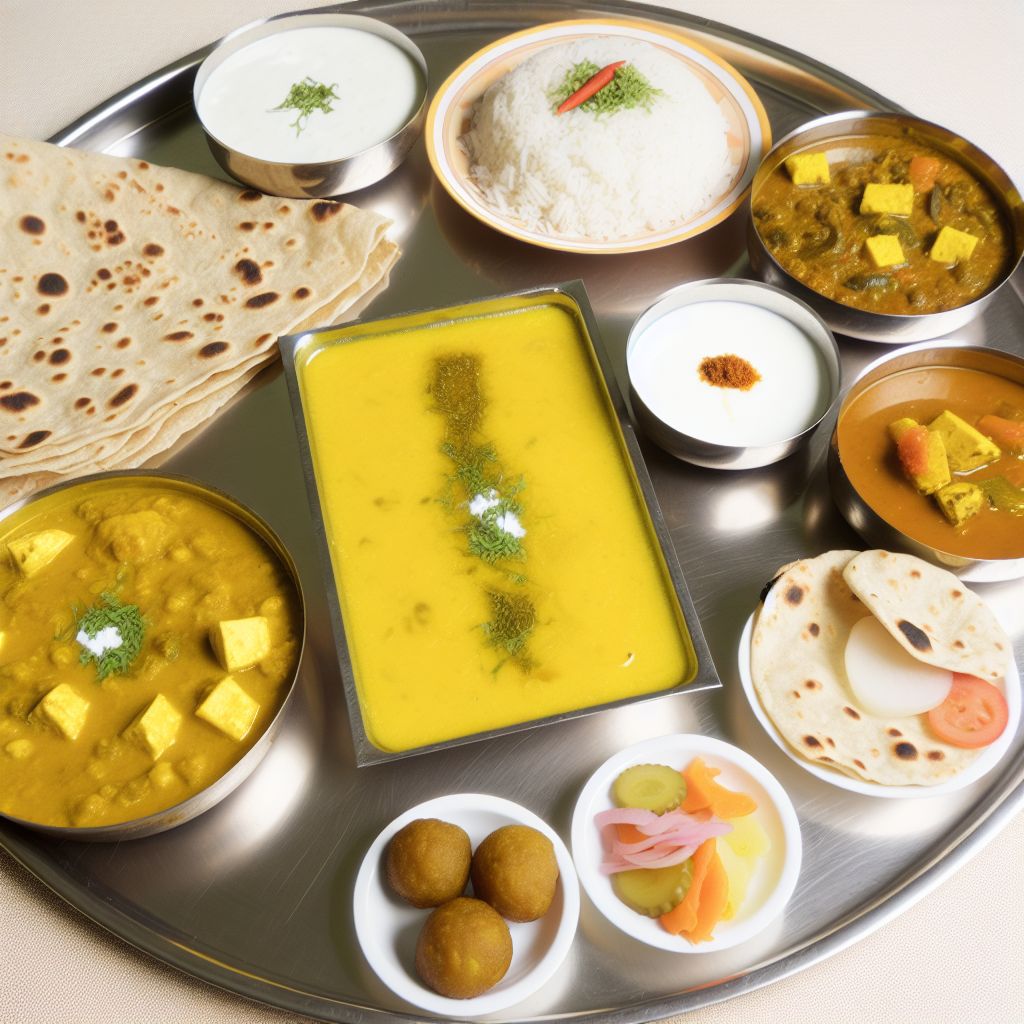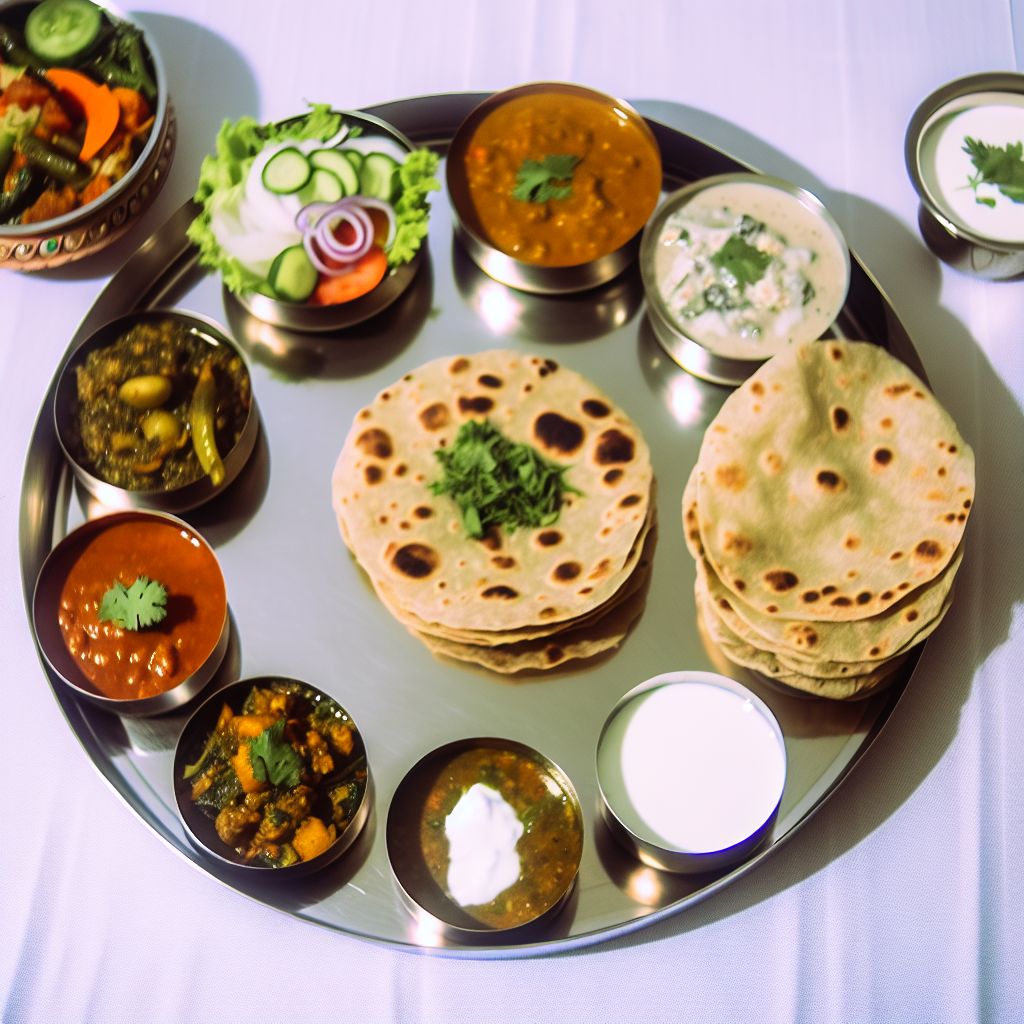The Origins of Paranthas and Pakoras
Paranthas and Pakoras are two iconic dishes that have been deeply rooted in Indian culinary traditions for centuries. The Parantha, a layered flatbread, is believed to have originated in the northern regions of India, particularly Punjab and Uttar Pradesh. Its name derives from the Sanskrit word “parāntah,” meaning “layers of cooked dough.”
Pakoras, on the other hand, are crispy, deep-fried fritters made from gram flour and various vegetables or meats. Their origins trace back to ancient Indian kitchens, where cooks experimented with frying techniques to create quick, flavorful snacks.
Both dishes have transcended their humble beginnings to become staples in Indian households and street food culture. They are celebrated not just for their taste but also for their versatility and ability to bring people together.
Historical records suggest that paranthas were a favorite among Mughal emperors, while pakoras were often served during monsoon seasons to complement the rainy weather.
Today, these dishes are enjoyed worldwide, symbolizing the rich culinary heritage of India. Whether served at a roadside stall or a high-end restaurant, they evoke a sense of nostalgia and comfort.
Interestingly, the popularity of paranthas and pakoras has led to their inclusion in fusion cuisines, blending traditional Indian flavors with global culinary trends.
From ancient royal kitchens to modern-day eateries, the journey of these dishes reflects India’s evolving food culture.
Understanding their origins helps us appreciate the cultural significance and timeless appeal of paranthas and pakoras.
A Culinary Journey Through Indian Streets
Walking through the bustling streets of India, one cannot miss the aroma of freshly made paranthas and pakoras wafting through the air. These dishes are the lifeblood of Indian street food culture, offering a quick, affordable, and delicious meal to millions.
Street vendors often specialize in making paranthas stuffed with a variety of fillings, from spiced potatoes to paneer, while pakoras are served hot and crispy, paired with tangy chutneys.
In cities like Delhi, Chandni Chowk is famous for its parantha-wali gali, where vendors have been perfecting their craft for generations. Similarly, pakoras are a common sight at roadside stalls during monsoon rains, providing warmth and comfort.
These dishes are not just food; they are an experience. The act of watching a vendor skillfully flip a parantha or fry a batch of pakoras adds to the charm.
Street food culture in India is a testament to the country’s love affair with paranthas and pakoras. It showcases the creativity and resourcefulness of local chefs who turn simple ingredients into culinary masterpieces.
Moreover, the affordability of these dishes makes them accessible to people from all walks of life, further cementing their place in Indian society.
Whether you’re a tourist exploring India or a local looking for a quick bite, paranthas and pakoras are a must-try.
The streets of India are a treasure trove of flavors, and these dishes are among the brightest gems.
Paranthas: Layers of Flavor and Tradition
Paranthas are more than just flatbreads; they are a celebration of flavor and tradition. Made by layering dough and cooking it on a griddle, paranthas are a staple in North Indian cuisine.
The beauty of paranthas lies in their versatility. They can be stuffed with a variety of fillings, including spiced potatoes, paneer, radish, or even minced meat.
Traditionally, paranthas are served with a dollop of butter, yogurt, or pickles, enhancing their rich taste.
In Punjab, paranthas are often paired with lassi, a yogurt-based drink, creating a meal that is both hearty and refreshing.
Paranthas are also a popular breakfast item, providing a nutritious and filling start to the day.
Modern variations include whole wheat paranthas and gluten-free options, catering to health-conscious consumers.
Despite these innovations, the essence of paranthas remains unchanged: they are a dish that brings people together.
Whether enjoyed at home or at a roadside stall, paranthas are a testament to India’s rich culinary heritage.
Pakoras: The Crispy Snack That Stole Hearts
Pakoras are the ultimate comfort food, offering a crispy, flavorful bite that is hard to resist. Made by dipping vegetables or meats in gram flour batter and deep-frying them, pakoras are a favorite snack across India.
Common ingredients include potatoes, onions, spinach, and cauliflower, but the possibilities are endless.
Pakoras are often served with mint or tamarind chutney, adding a tangy twist to their savory flavor.
During monsoon seasons, pakoras are a staple, providing warmth and comfort against the chilly weather.
In addition to their taste, pakoras are loved for their simplicity. They require minimal ingredients and can be prepared quickly.
Pakoras have also found their way into fusion cuisines, with chefs experimenting with unique ingredients like cheese or seafood.
Despite these modern twists, the traditional pakora remains a favorite, symbolizing the essence of Indian street food.
Whether enjoyed as a snack or part of a meal, pakoras are a dish that continues to win hearts worldwide.
Regional Variations: From Delhi to Punjab
India’s diverse culinary landscape is reflected in the regional variations of paranthas and pakoras. In Delhi, paranthas are often stuffed with spiced potatoes or paneer, while in Punjab, they are paired with lassi and served with generous amounts of butter.
Pakoras also vary by region. In Rajasthan, mirchi pakoras made with green chilies are popular, while in Bengal, fish pakoras are a delicacy.
These regional differences highlight the adaptability of these dishes, allowing them to cater to local tastes and preferences.
Despite these variations, the essence of paranthas and pakoras remains the same: they are dishes that bring people together.
Exploring these regional variations is a culinary journey in itself, offering a glimpse into India’s rich food culture.
Whether you’re in the bustling streets of Delhi or the serene villages of Punjab, paranthas and pakoras are a common thread that unites people.
These dishes are a testament to India’s ability to celebrate diversity through food.
Regional variations add depth and richness to the story of paranthas and pakoras, making them even more special.
The Art of Making the Perfect Parantha
Making the perfect parantha is an art that requires skill and patience. The key lies in the dough, which should be soft and pliable.
Once the dough is prepared, it is rolled out and layered with ghee or butter before being cooked on a griddle.
The stuffing is equally important, with options ranging from spiced potatoes to paneer or minced meat.
Cooking the parantha requires precision, ensuring that it is evenly cooked and golden brown.
Traditionally, paranthas are cooked on a tawa, but modern kitchens often use non-stick pans for convenience.
Despite these advancements, the essence of making paranthas remains unchanged: it is a labor of love.
Perfecting the art of making paranthas is a journey that involves trial and error, but the results are always worth it.
Whether you’re a seasoned chef or a beginner, making paranthas is a rewarding experience that connects you to India’s rich culinary heritage.
Pakoras Beyond Potatoes: Creative Twists
While potato pakoras are a classic, there are endless possibilities for creative twists. From cheese pakoras to seafood variations, the options are limitless.
Vegetarians can experiment with ingredients like spinach, cauliflower, or even paneer.
For those looking for a unique flavor, try adding spices like ajwain or fennel seeds to the batter.
Fusion cuisines have also embraced pakoras, incorporating global ingredients like mozzarella or jalapeños.
These creative twists add a modern touch to the traditional pakora, making it even more versatile.
Despite these innovations, the essence of pakoras remains unchanged: they are a dish that brings people together.
Whether you’re experimenting in the kitchen or enjoying pakoras at a roadside stall, the possibilities are endless.
Pakoras are a testament to the creativity and adaptability of Indian cuisine.
Pairing Paranthas and Pakoras with Chutneys
Chutneys are the perfect accompaniment to paranthas and pakoras, adding a burst of flavor to every bite.
Mint chutney is a popular choice, offering a refreshing contrast to the rich flavors of paranthas and pakoras.
Tamarind chutney adds a tangy twist, while yogurt-based chutneys provide a cooling effect.
In addition to traditional chutneys, modern variations include mango or pineapple chutneys, adding a sweet touch.
Pairing chutneys with paranthas and pakoras is an art in itself, allowing you to customize your meal to suit your taste.
Chutneys also enhance the visual appeal of these dishes, adding vibrant colors to the plate.
Whether you’re enjoying paranthas and pakoras at home or at a restaurant, chutneys are a must-have.
They elevate the taste of these dishes, making them even more irresistible.
The Role of Spices in Elevating the Taste
Spices play a crucial role in elevating the taste of paranthas and pakoras. From cumin to coriander, each spice adds its unique flavor.
In paranthas, spices are often mixed into the stuffing, creating a burst of flavor with every bite.
Pakoras also benefit from spices, with options like turmeric, chili powder, and garam masala enhancing their taste.
The use of spices is not just about flavor; it is also about tradition. Each spice tells a story, reflecting India’s rich culinary heritage.
Spices also have health benefits, making paranthas and pakoras not just delicious but also nutritious.
Whether you’re making these dishes at home or enjoying them at a restaurant, spices are an essential ingredient.
They add depth and complexity to the flavor, making paranthas and pakoras even more special.
Spices are a testament to the creativity and resourcefulness of Indian chefs, turning simple ingredients into culinary masterpieces.
Paranthas and Pakoras in Modern Cuisine
Modern cuisine has embraced paranthas and pakoras, incorporating them into fusion dishes and innovative recipes.
From stuffed paranthas with global flavors to pakoras made with exotic ingredients, the possibilities are endless.
Restaurants worldwide have added these dishes



